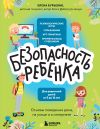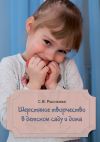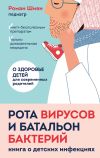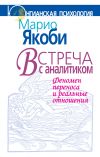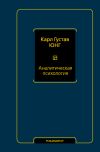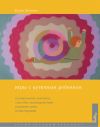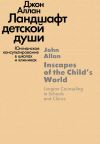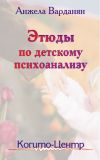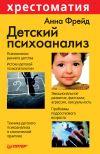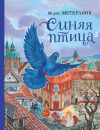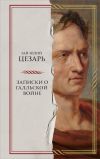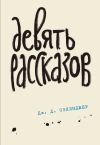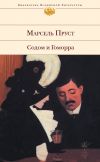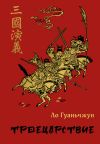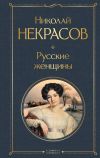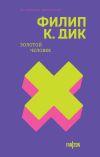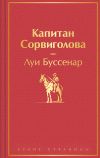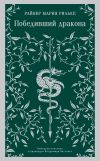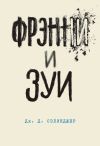Текст книги "Детский юнгианский психоанализ"

Автор книги: Дениз Лиар
Жанр: Психотерапия и консультирование, Книги по психологии
сообщить о неприемлемом содержимом
Текущая страница: 13 (всего у книги 13 страниц)
Примечания
Введение
1. C.G.Jung, Ma vie, Paris, Gallimard, 1966.
2. S. Freud, C.G. Jung, Correspondance, 2 t., Paris, Gallimard, 1975.
3. C.G. Jung, La Psychologie du transfert, Paris, Albin Michel, 1980.
4. M. Fordham, Children as Individuals, Londres, Hodder & Stoughton, 1969.
5. E. Neumann, The Origins and History of Consciousness, Princeton, N.J., Princeton University Press, 1969.
6. E. Neumann, The Great Mother, Londres, Routledge & Kegan Paul, 1970.
7. E. Neumann, Amor and Psyche, New York, Princeton University Press, 1973.
8. E. Neumann, The Fear of the Feminine, Princeton, N.J., Princeton University Press, 1994.
9. E. Neumann, The Child, Londres, Hodder and Stoughton, 1973.
Часть первая
К.Г. Юнг и ребенок
Глава первая. Диалог с Фрейдом
1. P Gay, Freud, une vie, Paris, Hachette, 1991.
2. E.G. Humbert, Jung, Paris, Ed. universitaires, 1983.
3. C. G. Jung, «Studies in word association», Experimental Researches, C.W., vol. 2. Londres, Routledge & Kegan Paul, 1973.
4. C.G. Jung, «The Psychology of Dementia Praecox», The Psychogenesis of Mental Disease, C.W., vol. 3, Londres, 1960.
5. C.G. Jung, «The Family Constellation», Experimental Researches, op. cit.
6. Ibid., § 1007.
7. Ibid.
8. Ibid., § 1013.
9. Ibid., § 1014.
10. C.G. Jung, «De 1’importance du pere pour la destinee de I’individu», Psychologie et education, Paris, Buchet-Chastel, 1963, p. 205–240.
11. C.G. Jung, inJahrbuch fur psycho-analystische undpsychopathologische Forschungen, vol. 1, Leipzig et Vienne, 1910.
12. «De 1’importance du pere…», p. 207.
13. Ibid, p. 208.
14. Ibid, p. 211–212.
15. Ibid., p. 212.
16. Ibid., p. 216.
17. Ibid., p. 217.
18. Ibid., p. 236.
19. Ibid., p. 237.
20. C.G. Jung, «Conflits de l’ame enfantine», Psychologie et education, op. cit., p. 119–177.
21. Ibid, p. 129.
22. Ibid, p. 133.
23. Ibid, p. 134.
24. Ibid, p. 135.
25. Ibid, p. 138.
26. Ibid, p. 140.
27. Ibid, p. 141.
28. Ibid, p. 138–139.
29. C.G. Jung, Metamorphoses et symboles de la libido, Paris, Montaigne, 1927.
30. C.G. Jung, «Conflits de l’ame enfantine», op. cit., p. 141.
31. Ibid, p. 142.
32. Ibid, p. 144–145.
33. Ibid, p. 146.
34. Ibid, p. 148–149.
35. Ibid, p. 151.
36. Ibid, p. 152.
37. Ibid, p. 153–154.
38. Ibid, p. 154.
39. Ibid, p. 154–155.
40. Ibid, p. 153.
41. Ibid, p. 156.
42. Ibid, p. 157–158.
43. Ibid, p. 158.
44. Ibid, p. 159.
45. Ibid.
46. Ibid, p. 159–160.
47. Ibid, p. 161.
48. Ibid.
49. Ibid, p. 163.
50. Ibid., p. 164.
51. Ibid., p. 165–166.
52. Ibid., p. 166–167.
53. Ibid., p. 167.
54. Ibid., p. 168.
55. Ibid., p. 171.
56. Ibid., p. 172–173.
57. Ibid., p. 171.
58. Ibid., p. 173.
59. Ibid.
60. Ibid., p. 174.
61. Ibid., p. 175.
62. Ibid., p. 176.
63. Ibid., p. 177.
64. C.G. Jung, «La rumeur», Psychologie et education, op. cit., p. 179–204.
65. Ibid, p. 181–182.
66. Ibid, p. 185.
67. C.G. Jung, «Uber Psychoanalyse beim Kinde», 1 Congres international depedagogie, Bruxelles, 1912; «A case of neurosis in a child», «The theory of psychoanalysis», Freud and Psychoanalysis, C.W., vol. 4, § 458–522.
68. Ibid., § 461–465.
69. Ibid., § 458.
70. Ibid., § 459.
71. Ibid., § 469.
72. Ibid., § 470.
73. Ibid.
74. Ibid., § 474.
75. Ibid.
76. Ibid., § 486.
77. C.G. Jung, «On psychological understanding», The Psychogenesis of Mental Disease, op. cit., p. 179 sq.
78. C.G. Jung, «A case of neurosis in a child», op. cit., § 490.
79. Ibid, § 510.
80. Ibid., § 520.
Глава вторая. Разрыв
1. C.G. Jung, Metamorphoses et symboles de la libido, op. cit.
2. G.G. Jung, Metamorphoses de l’ame et ses symboles, Geneve, Georg & Cie, 1967, p. 33.
3. Ibid., p. 34.
4. Ibid.
5. Ibid., p. 35.
6. Ibid.
7. C.G.Jung, Ma vie, op. cit., p. 19.
8. C.G. Jung, «The theory of psychoanalysis», Freud and Psychoanalysis, C.W., vol. 4, § 203–522.
9. Ibid., § 234.
10. Ibid., § 237.
11. Ibid., § 241.
12. Ibid., § 282.
13. Ibid., § 290.
14. Ibid., § 293.
15. Ibid., § 295.
16. Ibid., § 304.
17. Ibid., § 306.
18. Ibid., § 305.
19. Ibid., § 306.
20. Ibid., § 344.
21. Ibid., § 345.
22. Ibid., § 349.
23. Ibid., § 350.
24. Ibid., § 520.
Глава третья. Юнг таков, каков он есть
1. E.G. Humbert, Jung, op. cit., p. 35.
2. C.G. Jung, «On psychological understanding», op. cit.
3. C.G. Jung, «Instinct et Inconscient», Energetiquepsychique, Geneve, Georg et Cie, 1956.
4. C.G. Jung, «Child Development and Education», The Development of Personality, C.W., vol. 17, § 98-126.
5. Ibid., § 100 sq.
6. Ibid, § 102.
7. Ibid., § 103–107.
8. Ibid., § 106.
9. C.G. Jung, «Psychologie analytique et education», Psychologie et education, op. cit., p. 7-117.
10. Ibid., p. 96.
11. Ibid.
12. C.G. Jung, «The significance of the Unconscious in individual education», C.W., vol. 17, § 253–283.
13. Ibid., § 256.
14. C.G. Jung, «Introduction to Wickes’s Analyse der Kinderseele», C.W., vol. 17, § 80–97.
15. Ibid., § 87.
16. Ibid., § 85.
17. Ibid., § 90.
18. Ibid., § 94.
19. Ibid., § 97.
20. «A seminar with C.G. Jung: Comments on a child’s dream (1936–1937)», Spring 1974, New York, Spring Publications, 1974, p. 200–223.
21. Ibid, p. 222.
22. C.G. Jung, «L’enfant doue», Psychologie et education, op. cit., p. 241–259.
23. C.G. Jung, «Les aspects psychologiques de I’archetype de la mere», Les Racines de la conscience, Paris, Buchet-Chastel, 1971, p. 87–131.
24. C.G. Jung, «Contribution a l’aspect psychologique de la figure de Kore», Introduction a l’essence de la mythologie, Paris, Petite Bibliotheque Payot, 1958, p. 215–242.
25. Op. cit.
26. Op. cit.
27. Metamorphoses…, p. 439 sq.
28. «De l’importance du pere…», p. 235–236.
29. Ibid., p. 236.
30. C.G. Jung, «Contribution a la psychologie de l’archetype de l’enfant», Introduction a l’essence de la mythologie, op. cit., p. 105–144.
Часть вторая
Детский юнгианский анализ
Глава первая. Существует ли детский юнгианский анализ?
1. E.G. Humbert, in A. Virel, Vocabulaire des psychotherapies, Paris, Fayard, 1977, p. 304.
2. M. Fordham, Children as Individuals, op. cit., p. 98.
3. N. Tinbergen, The Study of Instinct, Londres, O.U.P., 1951.
4. E. Neumann, The Child, op. cit., p. 9.
5. E. Neumann, ibid., p. 153.
6. E.G. Humbert, Jung, op. cit., p. 107.
7. Ibid, p. 107.
8. J. Cosmer, «L’observation directe des interactions precoces», Psychiatrie de l’enfant, Paris, P.U.F., n° 27.
9. E. Neumann, The Origins and History of Consciousness, op. cit., p. 288.
10. E. Neumann, The Child, op. cit., p. 27.
11. Ibid, p. 8.
12. Ibid, p. 48.
13. C.G. Jung, op. cit.
14. M. Fordham, Children as Individuals, op. cit., p. 93 sq.
15. M. Fordham, The Self and Autism, Londres, Heinemann, 1976.
16. K. Lambert, Analysis, Repair and Individuation, Londres, Academic Press, 1981, p. 96.
17. K. Lambert, ibid., p. 96.
18. E.G. Humbert, Jung, op. cit., p. 106–107.
19. E. Neumann, The Child, op. cit., p. 82.
20. K. et M. Papousek, «Intuitive parenting: a dialectic counterpart to the infant integrative competence» in J.D. Osofsky, Handbook of Infant Development, New York, 1987.
21. E. Neumann, The Child, op. cit., p. 96–102.
22. D.W. Winnicott, De lapediatrie a lapsychanalyse, Paris, P.B. Payot, 1969.
23. C.G. Jung, «Contribution a 1’aspect psychologique de la figure de Kore», op. cit., p. 215–242.
24. A. Green, «La mere morte», Narcissisme de vie, narcissisme de mort, Paris, Les Ed. de Minuit, 1983.
25. C.G. Jung, Ma vie, op. cit., p. 203.
26. Ibid., p. 206.
27. C.G. Jung, Psychologie et education, op. cit., p. 159.
28. Dora M. Kalff, Le Jeu de sable, methode depsychotherapie, Paris, Epi, 1973.
29. F. Montecchi, Giocando con la sabbia, la psicoterapia con bambini e adolescenti e la «sandplaytherapy», Milan, Franco Angeli ed., 1993.
Глава вторая. Некоторые концептуальные понятия
1. C.G.Jung, Dialectique du moi et de l’inconscient, Paris, Gallimard, 1964, p. 294.
2. C.G.Jung, Introduction a l’etude de la mythologie, op. cit., p. 122.
3. C.G.Jung, «Freud and Jung: contrasts», C.W., vol. 4, p. 339.
4. C.G. Jung, Typespsychologiques, Geneve, Georg et Cie, 1950, p. 269.
5. C.G.Jung, Metamorphoses et symboles de la libido, op. cit., p. 44.
6. C.G. Jung, DHomme a la decouverte de son dme, Geneve, Mont-Blanc, 1970, p. 235 sq.
7. Ibid, p. 240.
8. C.G. Jung, Un mythe moderne, Paris, Gallimard, 1961, p. 86.
9. C.G. Jung, Dialectique du moi et de l’inconscient, op. cit., p. 96.
10. C.G. Jung, Aion, Paris, Albin Michel, 1983, p. 20 sq.
11. C.G. Jung, Les Racines de la conscience, op. cit., p. 483 sq.
12. C.G. Jung, Aion, op. cit., p. 15.
13. C.G. Jung, Les Racines de la conscience, op. cit., p. 485 sq.
14. C.G. Jung, La Psychologie du transfert, op. cit., p. 26.
15. C.G. Jung, Typespsychologiques, op. cit., p. 423–424.
16. C.G. Jung, Dialectique du moi et de l’inconscient, op. cit., p. 216.
17. C.G. Jung, Problemes de l’dme moderne, Paris, Buchet-Chastel, 1960, p. 13.
18. C.G. Jung, L’ Homme a la decouverte de son dme, op. cit., p. 259.
19. C.G. Jung, Typespsychologiques, op. cit., p. 412 sq.
20. C.G. Jung, L’ Homme a la decouverte de son dme, op. cit., p. 374.
21. C.G. Jung, Typespsychologiques, op. cit., p. 450.
22. C.G. Jung, Dialectique du moi et de l’inconscient, op. cit., p. 131.
23. C.G. Jung, Les Racines de la conscience, op. cit., p. 287.
24. Ibid., p. 287.
25. C.G.Jung, Aion, op. cit., p. 78.
26. C.G. Jung, Les Racines de la conscience, op. cit., p. 554.
27. C.G. Jung, LIEnergetiquepsychique, op. cit., p. 554.
28. C.G. Jung, Reponse a Job, Paris, Buchet-Chastel, 1971, p. 219.
29. C.G. Jung, Les Racines de la conscience, op. cit., p. 201.
30. M. Fordham, Children as Individuals, op. cit.
31. M. Fordham, The Self and Autism, op. cit.
32. E. Neumann, The Child, op. cit., p. 9, 20, 68, 182.
33. Ibid, p. 8–10, 27–43, 68.
34. E. Neumann, The Origins and History of Consciousness, op. cit., p. XXII, n°. 7.
35. Ibid., p. 42.
36. E. Neumann, The Child, op. cit., p. 54.
37. E. Neumann, The Origins and History of Consciousness, op. cit., p. 147.
38. E. Neumann, The Child, op. cit., p. 53.
39. Ibid, p. 162.
40. E. Neumann, «The moon and matriarcal consciouness», The Fear of the Feminine, op. cit., p. 66.
41. Ibid., p. 65.
42. E. Neumann, The Child, op. cit., p. 199.
43. Ibid, p. 88–91.
44. Ibid, p. 91.
45. Ibid., p. 86–87.
46. Ibid, p. 129–134.
47. Ibid., p. 29.
48. Ibid., p. 32 sq.
49. Antonio R. Damasio, LIErreur de Descartes, la raison des emotions, Paris, Odile Jacob, 1995.
Часть третья
Большие архетипические последовательности
Глава первая. Архаическая зависимость
1. W. Giegerich, «Ontogeny = Phylogeny? A fundamental critique of Erich Neumann’s Analytical Psychology», Spring 1975, New York, Spring Publications, 1975.
2. E. Neumann, The Child, op. cit., p. 24.
3. Ibid., p. 24.
4. Ibid.
5. Ibid., p. 23.
6. Ibid., p. 10.
7. Ibid.
8. E. Neumann, «The experience of the Unitary Reality», The Place of Creation, Princeton, N.J., Princeton University Press, 1989.
9. E. Neumann, «The Psyche and the Transformation of the Reality planes: A Meta-psychological Essay», The Place of Creation, op. cit.
10. C.G. Jung, Synchronicite et Paracelsica, Paris, Albin Michel, 1988.
11. E. Neumann, The Place of Creation, op. cit., p. 68.
12. E. Neumann, The Child, op. cit., p. 11–12.
13. Ibid, p. 16–17.
14. Ibid, p. 31.
15. C.G. Jung, The Psychogenesis of Mental Disease, op. cit., p. 40, § 82.
16. E. Neumann, The Child, op. cit., p. 38.
17. Ibid., p. 20.
18. Ibid., p. 58–59.
19. E. Neumann, The Origins and History of Consciousness, op. cit., p. 5–38.
20. Ibid., p. XXII, n. 7.
21. E. Neumann, The Child, op. cit., p. 96.
22. Ibid., p. 96 sq.
23. Ibid, p. 104.
24. Ibid.
25. «Le loup», Cahiers depsychologie jungienne, n° 7, 1975.
26. E. Neumann, The Child, op. cit., p. 106.
27. Ibid, p. 107.
28. Ibid., p. 108.
29. Ibid, p. 182.
30. Ibid, p. 168–169.
31. Ibid., p. 182.
32. L. Kreisler, IEnfant du desordre psychosomatique, Paris, Privat, 1981.
33. A. Green, «La mere morte», op. cit.
34. C.G. Jung, Introduction a l’essence de la mythologie, op. cit., p. 215–242.
Глава вторая. «Архетипические волны» отрочества
1. E.G. Humbert, Jung, op. cit., p. 107.
2. C.G. Jung, Metamorphoses de l’ame et ses symboles, op. cit., p. 437.
3. Ibid., p. 438–439.
4. E. Neumann, The Origins and History of Consciousness, op. cit., p. 113–114.
5. E. Neumann, The Child, op. cit., p. 182.
6. C.G. Jung, Metamorphoses de l’ame et ses symboles, op. cit., p. 438–439.
7. E. Neumann, The Origins and History of Consciousness, op. cit., p. 407–408.
Часть четвертая
Образ
Глава первая. О некоторых волках
1. C.G.Jung, L Homme, a la decouverte de son ame, op. cit., p. 329.
2. A. Green, «La mere morte», op. cit.
3. «Le loup», Cahiers depsychologie jungienne, n° 7, 1975.
4. E. Neumann, The Child, op. cit., p. 157 sq.
Глава вторая. Образ волка
1. Cf. ci-dessus «La Relation Archaique».
2. E. Neumann, The Child, op. cit., p. 136 sq.
3. M. Deguy, Actes, Paris, Gallimard, 1966.
Глава третья. Работа с образом
1. C.G. Jung, Metamorphoses et symboles de la libido, op. cit., p. 15.
2. C.G. Jung, Ma vie, op. cit., p. 208.
3. Ibid., p. 208 sq.
4. C.G. Jung, Metamorphoses de l’ame et ses symboles, op. cit., p. 82.
5. C.G. Jung, Les Racines de la conscience, op. cit., p. 330.
6. E.G. Humbert, Jung, op. cit., p. 55.
7. C.G. Jung, Typespsychologiques, op. cit., def. 55.
8. C.G. Jung, Metamorphoses de l’ame et ses symboles, op. cit., p. 64.
9. M.L. von Franz, La Voie de l’individuation dans les contes de fees, Paris, La Fontaine de Pierre, 1978.
10. P Solie, Psychanalyse et imaginai, Paris, Imago, 1980; Mythanalyse jungienne, Paris, Les Editions ESF, 1981.
Литература
Грин А. Мертвая мать. СПб.: Французская психоаналитическая школа, 2005.
Ламберт К. Анализ, выздоровление и индивидуация. СПб.: ИЦПК, 2004.
Нойманн Э. «Происхождение и развитие сознания». М.: «Релф-бук», «Ваклер» 1998.
Франц фон М.-Л. Психология сказки. Толкование волшебных сказок. СПб.: Б.С.К., 1998.
Юнг К.Г. Воспоминания, сновидения, размышления. Львов: Инициатива, 1998.
ЮнгК.Г. Психология переноса. М.: «Релф-бук», «Ваклер», 1997.
Юнг К.Г. «Психология Dementia praecox». Минск: Харвест, 2003.
Юнг К.Г. Значение отца в судьбе отдельного человека. Психоанализ детской сексуальности. СПб.: Союз, 1997.
Юнг К.Г. Конфликты детской души. Москва: Канон, 2004.
Юнг К.Г. Либидо, его метаморфозы и символы. СПб.: Восточно-Европейский Институт Психоанализа, 1994.
Юнг К.Г. Алхимия снов. СПб.: «Timothy», 1997.
Юнг К.Г. Психологические аспекты Коры // Душа и миф. Шесть архетипов. Киев-Москва: Порт-Рояль, Совершенство, 1997.
Юнг К.Г., Кереньи К. Введение в сущность мифологии // Душа и миф. Шесть архетипов. Киев-Москва: Порт-Рояль, Совершенство, 1997.
Юнг К.Г. Избранное. Минск: Попурри, 1998.
Cahiers depsychologie jungienne, «Le loup», n° 7, 1975.
Cosmer J., «L’observation directe des interactions precoces», Psychiatrie de I’enfant, Paris, P.U.F., n° 27.
Damasio Antonio R., L Erreur de Descartes, la raison des emotions, Paris, Odile Jacob, 1995.
Deguy M., Actes, Paris, Gallimard, 1966.
Fordham M., Children as Individuals, Londres, Hodder & Stoughton, 1969.
Fordham M., The Self and Autism, Londres, Heinemann, 1976.
Franz M.L. von, La Voie de l’individuation dans les contes de fees, Paris, La Fontaine de Pierre, 1978, et autres…
Freud S., Jung C.G., Correspondance, 2 t., Paris, Gallimard, 1975.
Gay P., Freud, une vie, Paris, Hachette, 1991.
Giegerich W., «Ontogeny = Phylogeny? A fundamental critique of Erich Neumann’s Analytical Psychology», Spring 1975, New York, Spring Publications, 1975.
Green A., «La mere morte», Narcissisme de vie, narcissisme de mort, Paris, Les Ed. de Minuit, 1983.
Humbert E.G., Jung, Paris, Ed. universitaires, 1983.
Humbert E.G., in A. Virel, Vocabulaire des psychotherapies, Paris, Fayard, 1977.
Jung C.G., «A seminar with C.G. Jung: comments on a child’s dream (1936–1937)», Spring 1974, New York, Spring Publications, 1974.
Jung C.G., Aion, Paris, Albin Michel, 1983.
Jung C.G., «Child Development and Education», The Development of Personality, C.W., vol. 17.
Jung C.G., «Contribution a l’aspect psychologique de la figure de Kore», Introduction a l’essence de la mythologie, Paris, Petite Bibliotheque Payot, 1958.
Jung C.G., «De l’importance du pere pour la destinee de l’individu», Psychologie et education, Paris, Buchet-Chastel, 1963.
Jung C.G., Dialectique du moi et de l’inconscient, Paris, Gallimard, 1964.
Jung C.G., «Freud and Jung: contrasts», C.W., vol. 4.
Jung C.G., in Jahrbuch furpsycho-analystische undpsycho-pathologische Forschungen, vol. 1, Leipzig et Vienne, 1910.
Jung C.G., «Instinct et Inconscient», Energetique psychique, Geneve, Georg et Cie, 1956.
Jung C.G., II Homme a la decouverte de son dme, Geneve, Mont-Blanc, 1970.
Jung C.G., la Psychologie du transfert, Paris, Albin Michel, 1980.
Jung C.G., «Les aspects psychologiques de l’archetype de la mere», les Racines de la conscience, Paris, Buchet-Chastel, 1971.
Jung C.G., Ma vie, Paris, Gallimard, 1966.
Jung C.G., Metamorphoses de l’dme et ses symboles, Geneve, Georg & Cie, 1967.
Jung C.G., Metamorphoses et symboles de la libido, Paris, Montaigne, 1927.
Jung C.G., Problemesde l’dmemoderne, Paris, Buchet-Chastel, 1960. Jung C.G., Reponse a Job, Paris, Buchet-Chastel, 1971.
Jung C.G., «Studies in word association», Experimental Researches, C.W., vol. 2, Londres, Routledge & Kegan Paul, 1973.
Jung C.G., Synchronicite et Paracelsica, Paris, Albin Michel, 1988.
Jung C.G., «The Psychology of Dementia Praecox», The Psychogenesis of Mental Disease, C.W., vol. 3, Londres, 1960.
Jung C.G., «The Theory of Psychoanalysis», Freud and Psychoanalysis, C.W., vol. 4.
Jung C.G., Typespsychologiques, Geneve, Georg et Cie, 1950.
Jung C.G., «Uber Psychoanalyse beim Kinde», 1 Congres international de pedagogic, Bruxelles, 1912; «A case of neurosis in a child», «The theory of psychoanalysis», Freud and Psychoanalysis, C.W., vol. 4.
Jung C.G., Un mythe moderne, Paris, Gallimard, 1961.
Kalff Dora M., le Jeu de sable, methode de psychotherapie, Paris, Epi, 1973.
Kreisler L., I Enfant du desordre psychosomatique, Paris, Privat, 1981.
Lambert K, Analysis, Repair and Individuation, Londres, Academic Press, 1981.
Montecchi F., Giocando con la sabbia, lapsicoterapia con bambini e adolescenti e la «sandplaytherapy», Milan, Franco Angeli ed., 1993.
Neumann E., Amor and Psyche, New York, Princeton University Press, 1973.
Neumann E., The Child, Londres, Hodder and Stoughton, 1973.
Neumann E., «The experience of the Unitary Reality», The Place of Creation, Princeton, N.J., Princeton University Press, 1989.
Neumann E., The Fear of the Feminine, Princeton, N.J., Princeton University Press, 1994.
Neumann E., The Great Mother, Londres, Routledge & Kegan Paul, 1970.
Neumann E., The Origins and History of Consciousness, Princeton, N.J., Princeton University Press, 1969.
Papousek K. et M., «Intuitive parenting: a dialectic counterpart to the infant integrative competence», in J.D. Osofsky, Handbook of Infant Development, New York, 1987.
Solie P, Mythanalysejungienne, Paris, Les Editions ESF, 1981.
Solie P, Psychanalyse et imaginai, Paris, Imago, 1980.
Tinbergen N., The Study of Instinct, Londres, O.U.P., 1951.
Winnicott D.W., De la pediatrie a la psychanalyse, Paris, Petite Bibliotheque Payot, 1969.
Правообладателям!
Это произведение, предположительно, находится в статусе 'public domain'. Если это не так и размещение материала нарушает чьи-либо права, то сообщите нам об этом.
